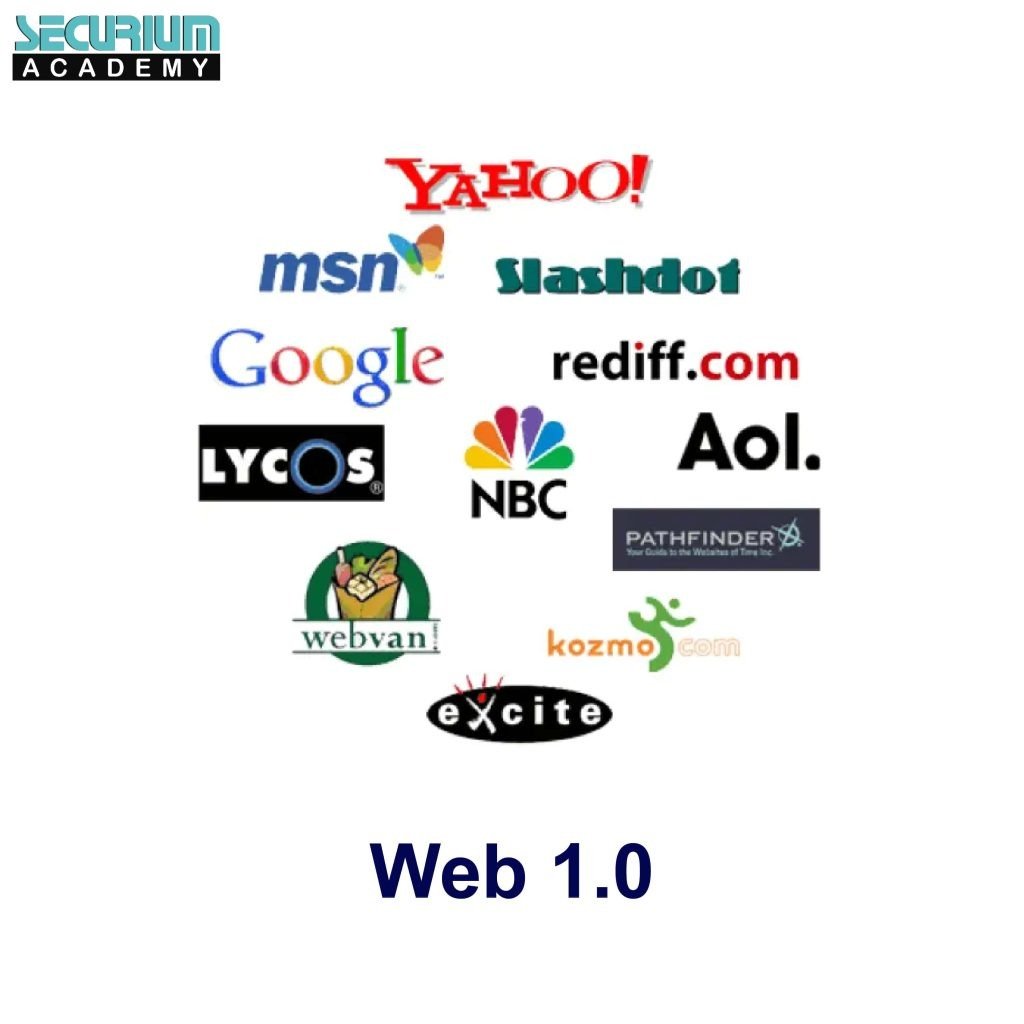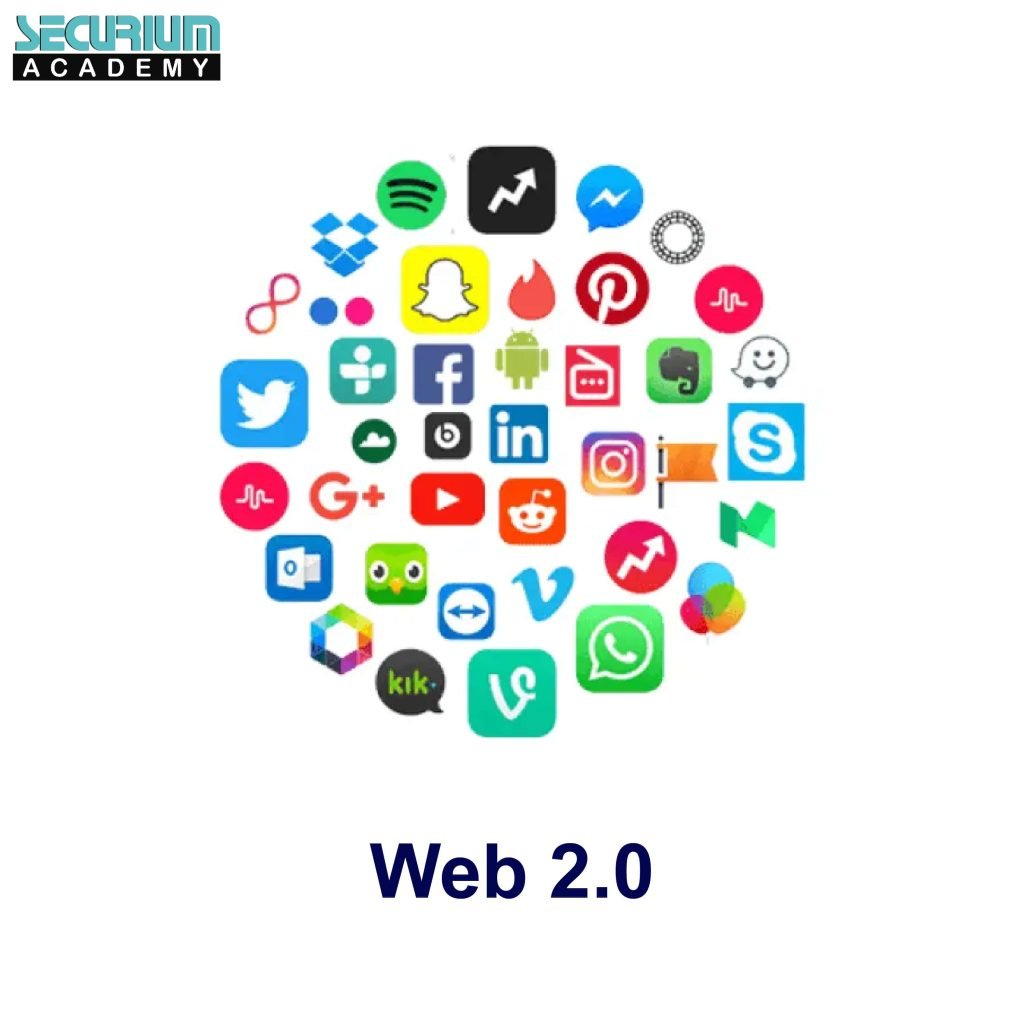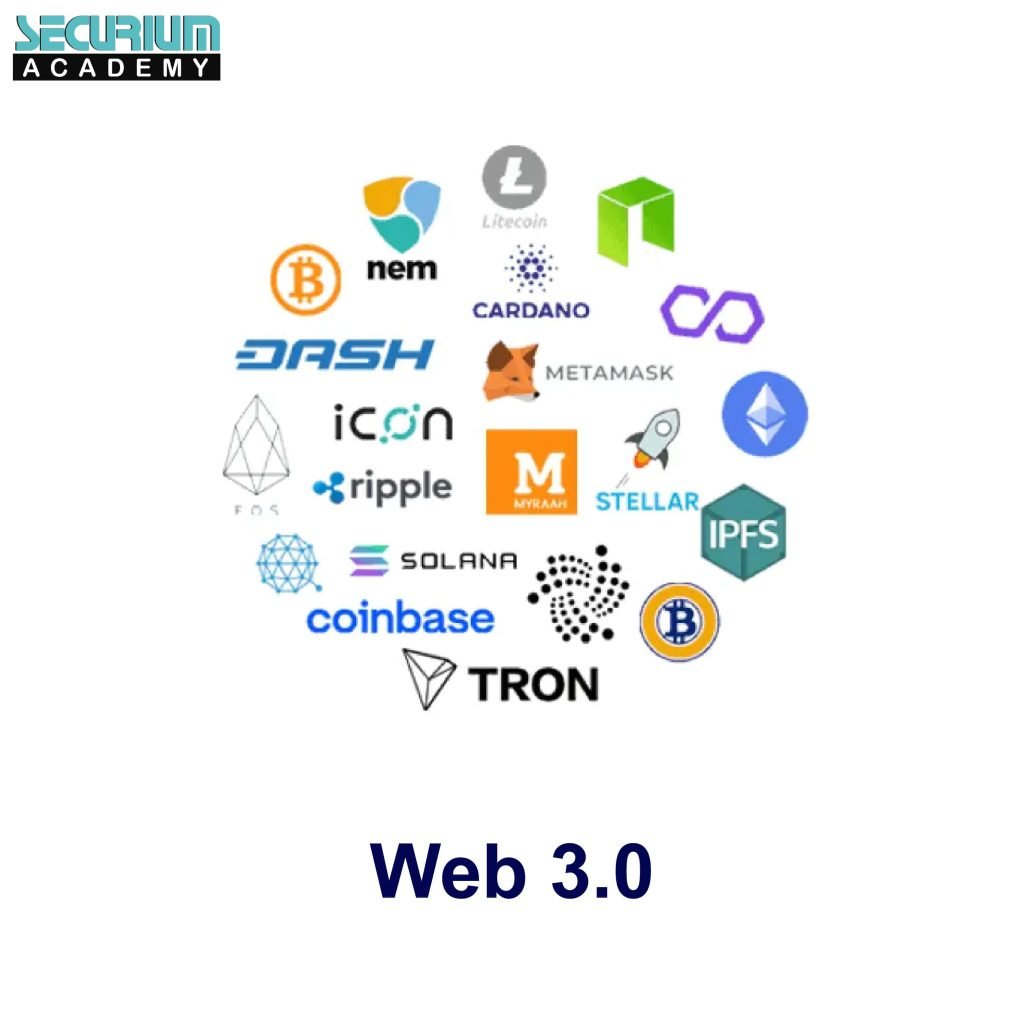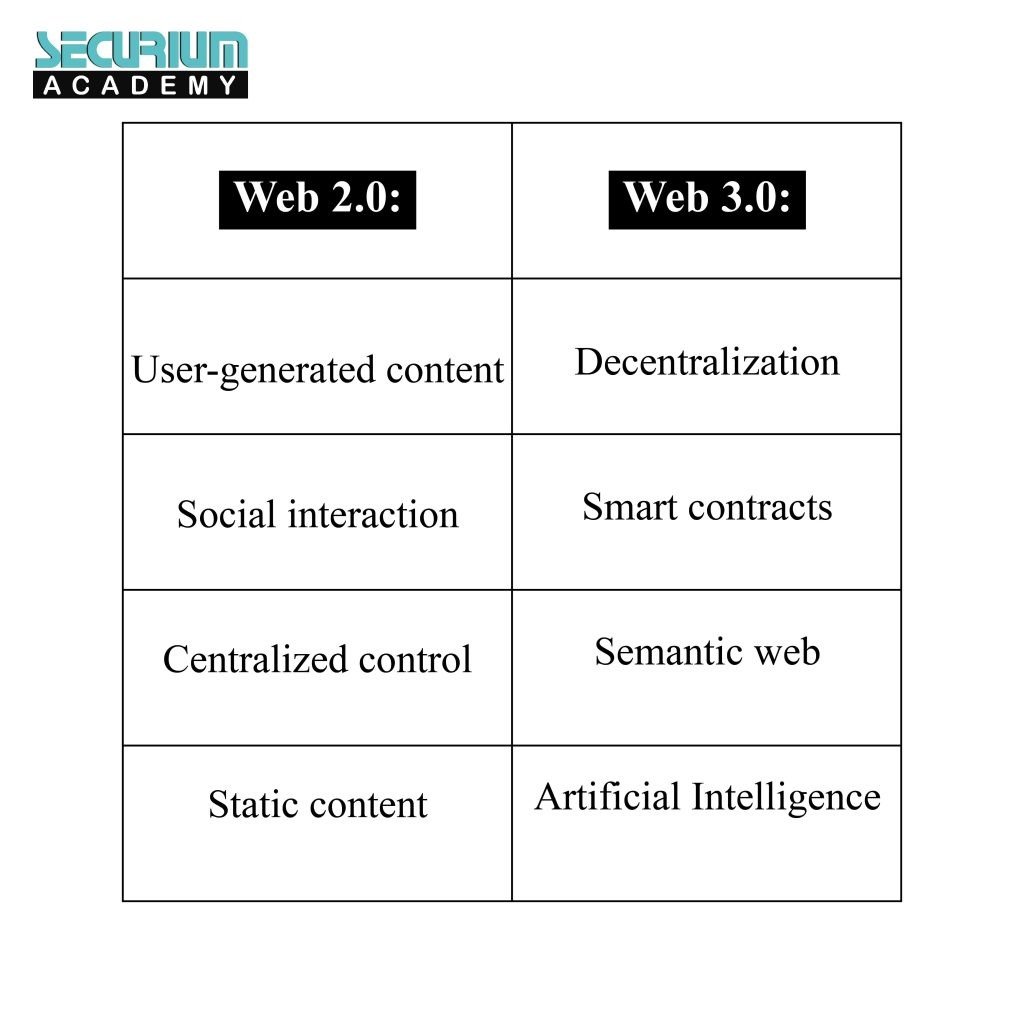Introduction:
The evolution of the internet has given rise to different stages of web development. Web 1.0, Web 2.0, and Web 3.0 each represent distinct eras of the internet, characterized by their unique features and functionalities. Understanding these stages is crucial for comprehending the ongoing advancements and the impact they have on various aspects of our digital lives.
Web 1.0:

Web 1.0, also known as the “read-only” web, refers to the early days of the internet when static web pages were created and consumed by users. During this era, websites were primarily informational, lacking interactivity and user-generated content. It was a one-way communication where users passively consumed the content.
Web 2.0:

Web 2.0 brought a paradigm shift by introducing user interactivity and participation. It marked the rise of social media, blogging platforms, and online communities.
Web 2.0 empowered users to create and share content, fostering collaboration and user-generated contributions. It transformed the internet into a dynamic platform, enabling two-way communication between users and websites.
Web 3.0:

Web 3.0, also referred to as the “semantic web,” is the next phase in the evolution of the internet. It aims to provide a more intelligent, personalized, and immersive web experience. It leverages technologies such as artificial intelligence, machine learning, and blockchain to enhance data interoperability, security, and user privacy. It focuses on context-aware applications, enabling machines to understand and interpret data more efficiently.
Must Read This Article – XSS Through SVG File Upload
Difference between Web 2.0 and 3.0:

Web 2.0 and Web 3.0 are terms used to describe different stages of the evolution of the World Wide Web. Here’s a comparison of the two:
Web 2.0:
- User-generated content: Web 2.0 is characterized by user-generated content. It allowed users to create and share content on the internet through social media platforms, blogs, wikis, and other interactive websites.
- Social interaction: Web 2.0 emphasized social interaction and collaboration among users. It enabled people to connect, communicate, and share information with each other.
- Centralized control: Web 2.0 platforms were typically owned and controlled by central entities like companies or organizations. Users had limited control over the platforms and their data.
- Static content: Although Web 2.0 introduced user-generated content, most of the web pages were still static and didn’t update in real time. Dynamic and interactive content was limited to specific web applications.
We have launched the web 3.0 course Online (CS3WP) – Learn More
Web 3.0:
- Decentralization: Web 3.0 aims to decentralize the Internet, shifting away from centralized control. It leverages blockchain technology and peer-to-peer networks to create a more distributed and open web.
- Smart contracts: Web 3.0 introduces the concept of smart contracts, which are self-executing contracts with predefined rules encoded in computer programs. Smart contracts enable automated and trustless interactions between parties.
- Semantic web: Web 3.0 focuses on the semantic web, where data is structured and linked in a way that machines can understand and process it. This allows for more intelligent search capabilities and a better contextual understanding of information.
- Artificial Intelligence: Web 3.0 incorporates artificial intelligence (AI) to provide more personalized and tailored experiences. AI algorithms can analyze user data and behavior to offer customized recommendations and services.
- Real-time and interactive content: Web 3.0 enables real-time and interactive content across various applications. It allows for dynamic updates, real-time collaboration, and immersive experiences through technologies like augmented reality (AR) and virtual reality (VR).
Web 3.0 in Business and Marketing:
Web 3.0 introduces new opportunities for businesses and marketers. It enables the development of decentralized applications (dApps) and smart contracts, fostering trust, transparency, and efficiency in transactions. Web 3.0 business or Web 3.0 marketing also facilitates targeted advertising based on granular user data while ensuring privacy protection.
Web 3.0 Features:
Decentralization: Web 3.0 emphasizes decentralization by leveraging blockchain technology. Instead of relying on central authorities or intermediaries, data, and transactions are distributed across a network of nodes. This decentralized approach enhances security, reduces the risk of single points of failure, and promotes trust in digital interactions.
Smart Contracts: Web 3.0 introduces smart contracts, which are self-executing agreements encoded on the blockchain. These contracts automatically execute predefined conditions without the need for intermediaries. Smart contracts enhance transparency, reduce transaction costs, and enable the automation of complex processes.
Enhanced Privacy and Security: Web 3.0 focuses on improving user privacy and data security. With the help of cryptographic techniques, users can control and protect their personal data, granting access only to trusted entities. Blockchain technology ensures tamper–proof data storage and verification, reducing the risk of data breaches and unauthorized access.
Internet of Things (IoT): Web 3.0 integrates IoT devices, enabling seamless communication and data exchange between physical objects and the digital realm.
Blockchain Technology: Web 3.0 incorporates blockchain for decentralized data storage, secure transactions, and establishing trust in digital interactions.




